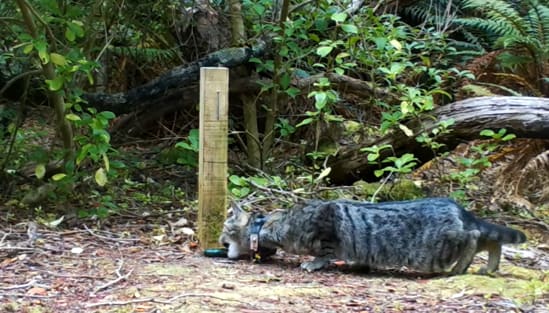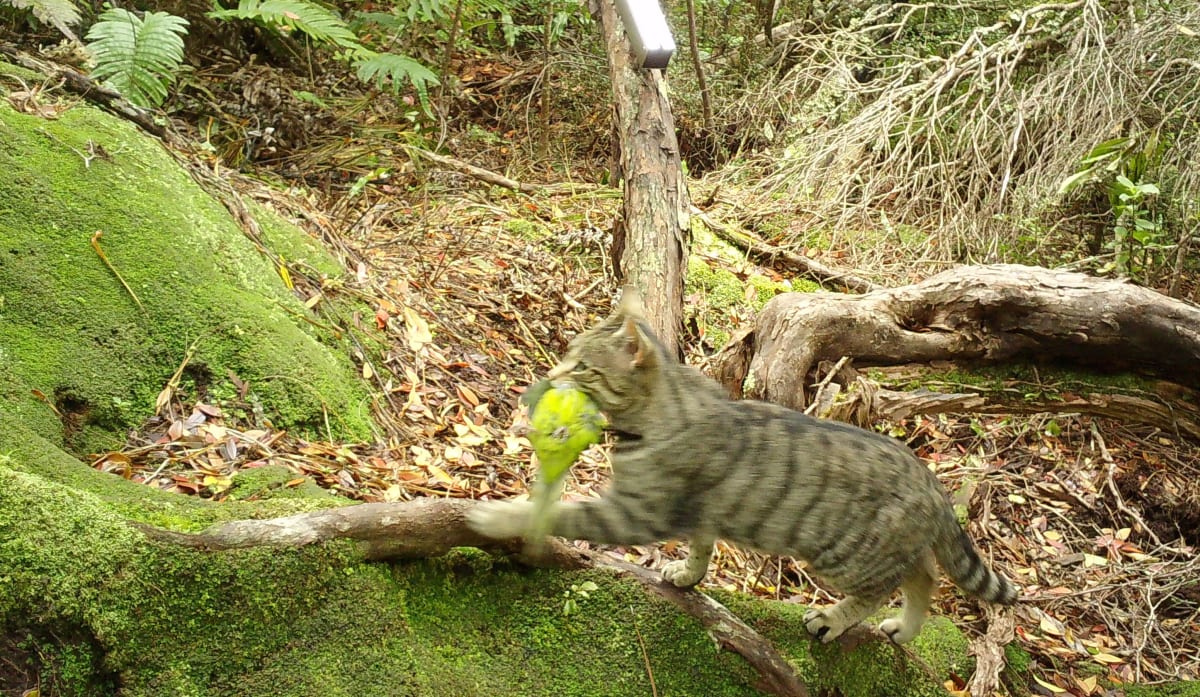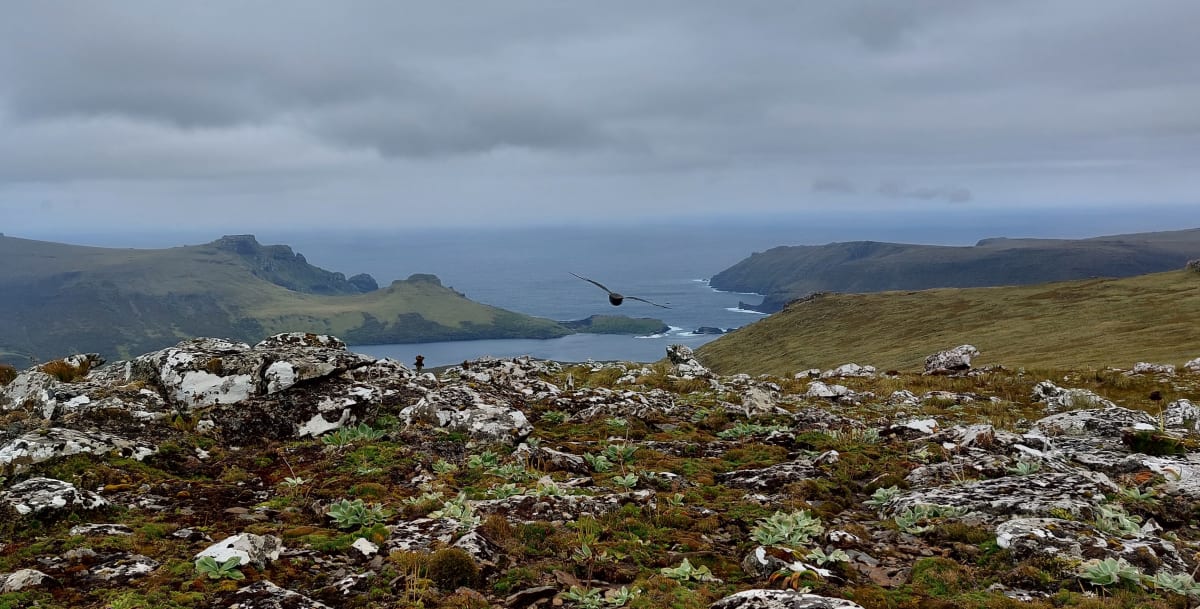
There’s renewed hope for restoring the native flora and fauna on New Zealand’s predator-ravaged subantarctic Auckland Islands
The world’s most ambitious predator-free project has received a cash injection that could bring it a step closer to being revived after its interruption by Covid.
A private donor has given $100,000 to the Maukahuka Pest Free Auckland Island project and is promising to match the donation later in the year.
Some of the funds will be used to develop and test a poison bait for the eradication of feral cats from Auckland Island. If it proves effective, the bait could become an invaluable tool for future cat campaigns.
The donor, who wants their identity kept secret, contacted the Department of Conservation (DoC) after reading a Listener article about the Maukahuka project’s funding plight.
Over the past four years, DoC and Ngāi Tahu have led research into the feasibility of ridding Auckland Island, Maukahuka, of pigs, feral cats and mice.
If the effort succeeds, it will be the largest and most complex island eradication undertaken. It is estimated it will cost $84 million and take a decade.
DoC put the project on hold in April 2020 as Covid stopped tourism in its tracks and cut funding from visitor levies and concession fees.
The project is also expected to rely on philanthropic funding and it was felt donations would be less forthcoming during a pandemic.
DoC national eradication team manager Stephen Horn says the anonymous $100,000 is a big boost and he is hopeful that as the economic situation improves, more such sources of cash for the project can be explored.

“Contributions can have a big impact even before the project is implemented and there are people out there who care deeply about preserving our wildlife and are very thoughtful in their approach to doing so,” says Horn.
Why so important?
As the breeding site for some of the world’s rarest birds and home to the largest number of subantarctic invertebrates, the Auckland Islands are a World Heritage Site.
Auckland Island, the group’s largest, is 465km south of Bluff.
Over the past 150-200 years, introduced pigs, cats and mice have decimated the islands’ bird life and caused severe ecological damage.
Getting rid of the mammalian pests from the 46,000ha main island would allow the populations of hundreds of native and endemic plants and wildlife to recover.
This includes more than 280 insects and 38 bird species. It is the last New Zealand subantarctic island where mammalian pests remain and eradicating them will also remove the risk for nearby pest-free islands.
When the Maukahuka project was put on hold, Horn, who had managed the project, transferred to DoC’s national eradication team. He is one of five people working on a variety of programmes towards the country’s 2050 predator-free goal.
He and his team have been given a mandate to work on eradication tools and capability targeting pigs, cats and mice so they will be ready to restart mass eradication when sufficient funding is to hand. This includes developing poison baits.

In summer, they did a second stint on Auckland Island to test a sausage-based cat bait dyed a green-blue colour to deter birds. An trial two years earlier was to see if cats found the non-toxic form of the bait palatable.
Horn says the poison trial was positive with 80 percent of cats eating the bait at one site and half of them at another.
The bait is a necessary alternative to traps, the main method used for feral cat eradication. But feral cats are smart and naturally suspicious.
“There is a proportion of the population that are unlikely to engage with something that looks a bit foreign,” says Horn.
Bait laying beats bush bashing
Auckland Island’s rugged terrain is another reason to favour baits over traps.
“It’s a big place and hard to get around. There are lots of areas that are just too steep for people. The bait tool comes into play allowing us to target animals where people can’t get to,” he says.
“The big thing is detection and knowledge of what the population is up to and being able to respond fast so you can get numbers down to zero as quickly as possible,” he says.
Even without the island’s isolation, tough terrain and temperamental weather, it would be a challenging and complex project.
No other island of its size has been cleared of mice and pigs and only one larger feral-cat eradication attempt has been made, in Western Australia, says Horn.
DoC is eyeing Australia as a source of poison pig bait. But the Australians’ cat bait uses kangaroo meat, which can’t be obtained here, hence Horn and team’s development work on a local alternative.
Complex and ambitious though the work is, they don’t have to look far to see the rewards.
A pioneering eradication project in 1993 on Enderby and Rose islands, which are part of the Auckland Islands, saw the removal of mice and rabbits.
Thirty years on, Enderby is an exemplar of the iconic wildflowers that grow in the New Zealand subantarctic islands.
“There are big megaherb displays in the summer that are a profound contrast to the devastating effects of pests on Auckland Island,” says Horn.
Mammalian havoc
“What is striking about Auckland Island is its wild and remote ecosystem that has evolved over millions of years. But with the arrival of humans, and unintentionally mice, cats and pigs, in the short time of about 200 years those pests have survived and wreaked havoc,” says Horn.
Pigs and cats are responsible for the extinction of 32 native bird species on the island and nine species of burrowing seabirds. Other seabirds have retreated to nearby pest-free islands or steep parts of the island to escape the introduced predators.
Pigs were released by sealers as a food source in 1807, a year after it was discovered, but they proved difficult to catch.
It is thought cats arrived in the 1820s, escaping ships on which they were carried to control rodents. Today, there are an estimated 500 to 1500 on the island.
“They do it tough” in the harsh climate, Horn says, and not many survive past kittens.
Cats live mostly in the island’s rata forest, where food and shelter are more plentiful than the tussock zones, living off a diet of fish, land birds, seabirds and invertebrates. Cats have been caught on camera with parakeets in their mouths.
One feline, collared on their first visit, was on one side of the island for several months over summer. In March, it crossed the island to an area of coastal cliffs, presumably to hunt for fledging sea birds.

Cats can range far, with one male’s home being found to extend over 6000ha on a ridge where there was little vegetation.
Females in more productive parts of the island confine themselves to areas of about 20ha, Horn says.
“When they are pregnant, they won’t move far, so it is pretty difficult to detect a female with kittens or that is breeding,” says Horn.
Feral cats have athletic, lean frames and travel through tunnels and tracks beneath the scrub, in tussock and near the hill tops. Such inaccessible areas make toxic bait the most effective eradication tool, he says.
Cats are also good swimmers. A camera captured five felines on Masked Island, a small dot of land in Auckland Island’s Carnley Harbour.
“They go out there to prey on seabirds that are spilling over from pest-free Adams Island or other places.”
Masked Island is too small to sustain cats year round so they can only have swum there, says Horn.
“At low tide it was a distance of more than 60m and over a person’s head to get out there so they are definitely not tip-toeing across.”
Seabird capital
New Zealand is a global capital of seabird diversity and on the Auckland Islands alone 25 species breed, including albatross, petrels, penguins, terns and gulls.
The pests have decimated and continue to threaten the fragile and rare subantarctic seabird population.
Gibson’s wandering albatross breed mainly on the Auckland Islands, as do 99 percent of the world’s white-capped mollymawk, most of which populate pest-free pinnacle rock Disappointment Island west of Auckland Island, says Horn.
A colony of albatross have been seen breeding on Auckland Island’s south-west cape, but, unfortunately, so have pests.
“They now breed only where it is too steep for pigs to survive, and when you go there you often see pigs in among the nesting colonies to the boundary. We’ve seen cats in there as well, says Horn.
“Cats have been filmed killing wandering albatross on some of the French subantarctic Islands, so we know they can,” he says.
Although burrowing seabirds no longer survive on Auckland Island, they have found a refuge on the nearby pest-free islands, from where they can be expected to repopulate the main island.

“It will take decades, but it can be done naturally once you take the pests away,” says Horn.
Loss of bird life also hurts the island’s biological ecosystem, he says.
“Seabirds are the key engineers of the ecosystem, importing nutrients onto the land. If seabirds are unable to survive on Auckland Island, it means all those nutrient inputs for invertebrates and plants disappear.”
Horn points to the flipside of the island group’s isolation. Although it makes the eradication project costly and difficult, it affords protection from pests whose only way of reinvading is by jumping ship when vessels visit.
Next steps
Before Horn and his team can begin using toxic cat bait on Auckland Island, it needs both Environmental Protection Authority and Ministry for Primary Industries approval. That’s a process that usually takes two to three years, but Horn doesn’t want to pre-empt it.
His team needs to duplicate the trial to get more data on the product’s efficacy. They are designing another test run for next winter, probably in the South Island, avoiding the cost and logistics difficulty of travelling to the subantarctic.
A pig-bait trial is in the pipeline, too, and is also likely to be in the South Island.
“We don’t have many tools against pigs, either, and farmers and conservationists are screaming out for them, so it will be very beneficial.”
They are also investigating the use of artificial intelligence software to cut the time spent analysing images from hundreds of trail cameras for pest sightings.
Horn says the project is a major challenge that, if accomplished, will influence other pest-eradication efforts.
“The capability that will be developed through this project will be a massive advance for conservation in New Zealand, [giving us] across-the-board approaches to pigs, mice and cats,” he says.
Made with the support of the Public Interest Journalism Fund








